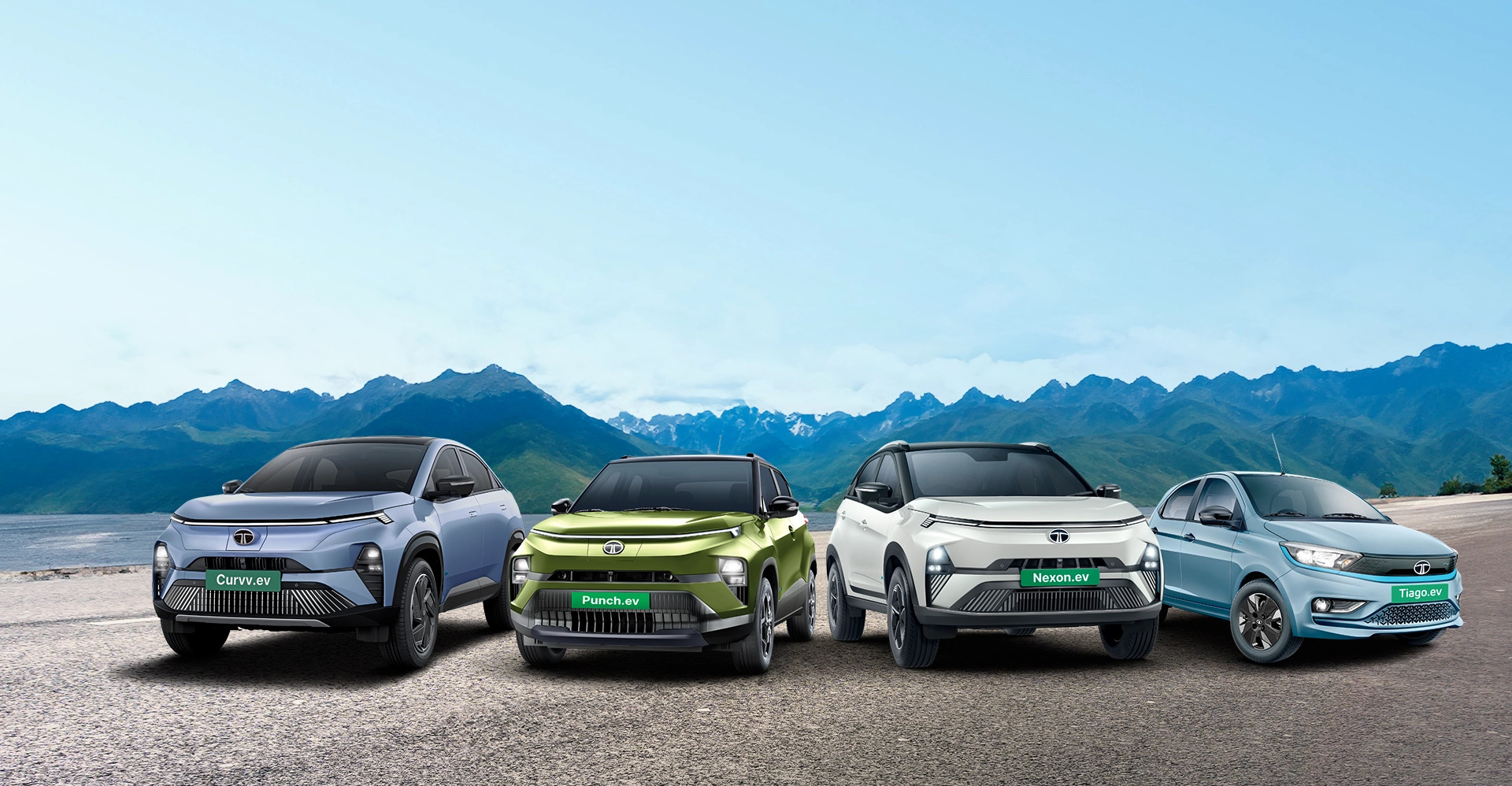Tata Motors is charging full speed ahead in the electric vehicle space with an ambitious EV roadmap aimed at dominating India’s rapidly growing clean mobility segment. With plans to launch 10+ electric vehicles by 2030, Tata is positioning itself as a homegrown EV leader, ahead of Mahindra, MG, and even Hyundai.

Tata’s 3-Tier EV Strategy
Tata’s future electric lineup is divided into three key tiers to cover every consumer need:
- Entry-Level EVs (₹10–15 Lakh)
- Models: Tiago EV, Tigor EV, Punch EV
- Target: Budget-conscious city users
- Platform: SIGMA and modified ICE platforms
- Mid-Segment EVs (₹15–25 Lakh)
- Models: Nexon EV, Curvv EV, Harrier EV
- Target: Urban professionals and families
- Platform: Gen-2.1 (multi-powertrain support)
- Premium EVs (₹30 Lakh+)
- Models: Sierra EV, Avinya
- Target: Luxury & tech-savvy buyers
- Platform: Gen-3 born-electric skateboard (dedicated EV)
How Tata’s EVs Stack Up (2024–2026)
| Model | Range (Claimed) | Price Range | Segment | Key Rivals |
|---|---|---|---|---|
| Punch EV | 315–421 km | ₹10–13.5 Lakh | Compact SUV | Citroën eC3, MG Comet |
| Nexon EV | 325–465 km | ₹14.5–19.5 Lakh | Sub-compact SUV | Mahindra XUV400, MG ZS EV |
| Curvv EV | ~500 km | ₹20–25 Lakh* | Coupe SUV | Hyundai Creta EV (2025) |
| Harrier EV | ~500–550 km | ₹25–30 Lakh* | Mid-size SUV | Mahindra XUV.e8 |
| Sierra EV | ~550 km | ₹28–32 Lakh* | Lifestyle SUV | Maruti eVX, XUV.e9 |
| Avinya | 500–600 km | ₹35–40 Lakh* | Premium crossover | Hyundai Ioniq 5, BYD Seal |
*Estimated pricing based on Tata’s strategy and market trends.
Next-Gen Platforms Explained
- Gen-2.1 Platform:
Supports both ICE and EV variants (e.g., Nexon, Curvv, Harrier)
More affordable to manufacture and upgrade. - Gen-3 EV Platform (Avinya):
Pure electric skateboard architecture
Allows flat floors, larger cabins, and futuristic designs
Built for global markets, beginning 2027
Tata vs Competitors: The EV Battle
| Brand | 2024 Models | Strengths | Weaknesses |
|---|---|---|---|
| Tata | Nexon EV, Punch EV, Tiago EV | Wide portfolio, strong sales, local R&D | Older tech in base variants |
| Mahindra | XUV400, XUV.e8 (upcoming) | Future-focused, powerful platforms | Slow to launch, limited variety |
| MG | ZS EV, Comet EV | Good design, fast charging | Higher price, limited service |
| Hyundai | Ioniq 5, Kona EV | Advanced features, global quality | Expensive, not mass-market focus |
| Maruti | eVX (2025 launch) | Trust factor, affordability | Late to EV game |
What’s Coming Next (2025–2027)
- Curvv EV – Coupe-styled Nexon alternative with up to 500 km range
- Harrier EV – Larger family SUV with high performance
- Sierra EV – Revival of the legendary name in an electric avatar
- Avinya – Tata’s global flagship EV launching on Gen-3 platform
Final Verdict
Tata Motors isn’t just building EVs—it’s building an ecosystem. With advanced platforms, flexible pricing, and a deep understanding of Indian consumers, Tata’s EV roadmap is designed to cover everything from city cars to premium cruisers.
As rivals scramble to keep up, Tata already has the first-mover advantage in the ₹10–30 lakh EV segment. If executed as planned, Tata will continue to dominate India’s electric future, with models that cater to every need, from everyday commutes to aspirational travel.
